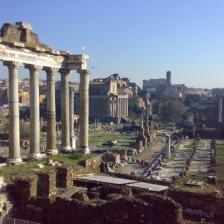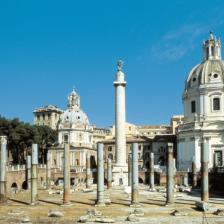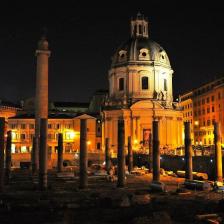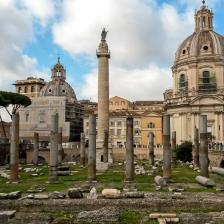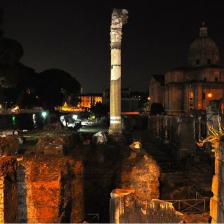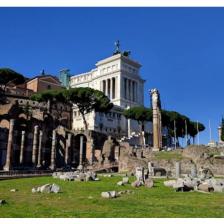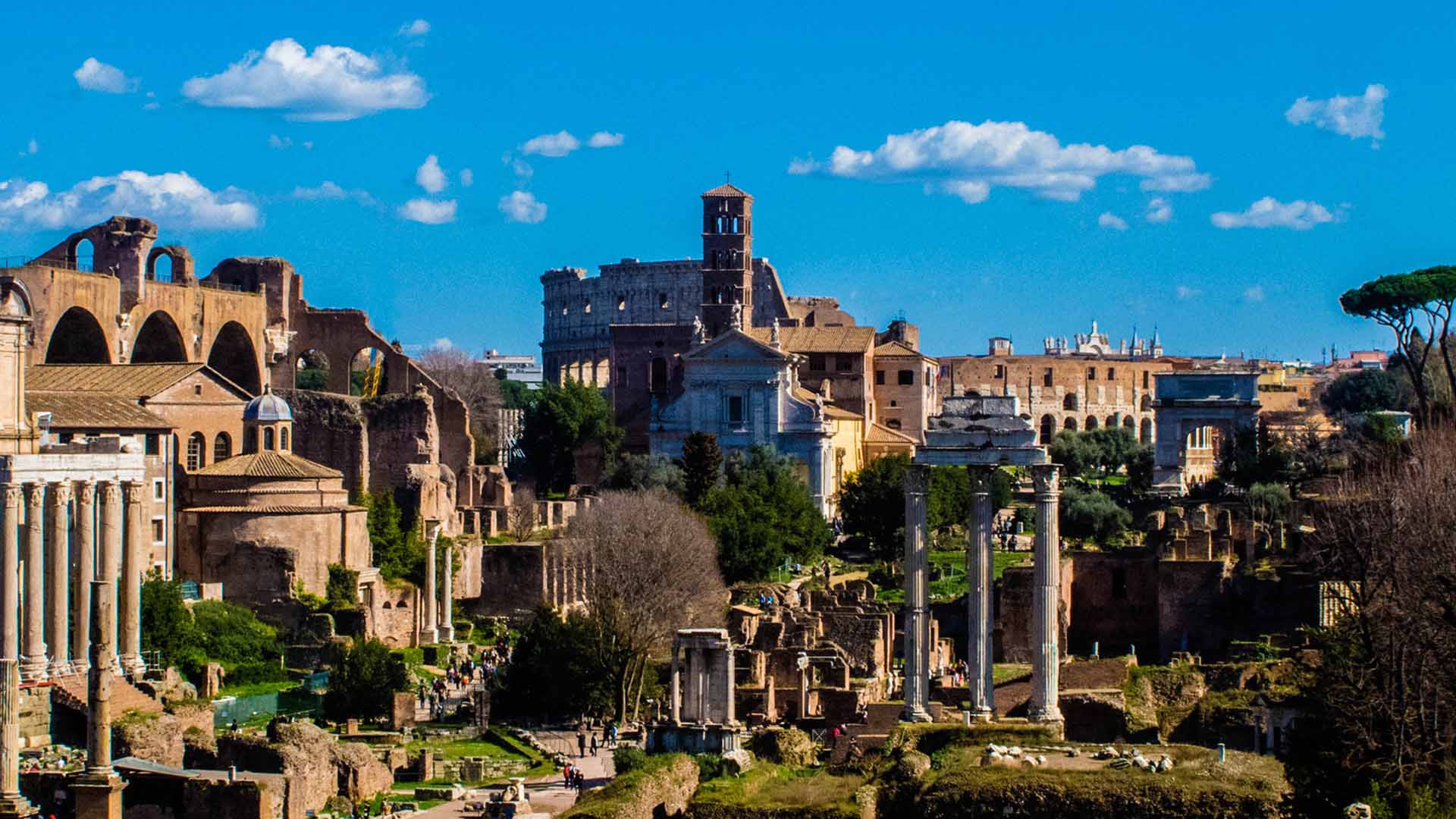
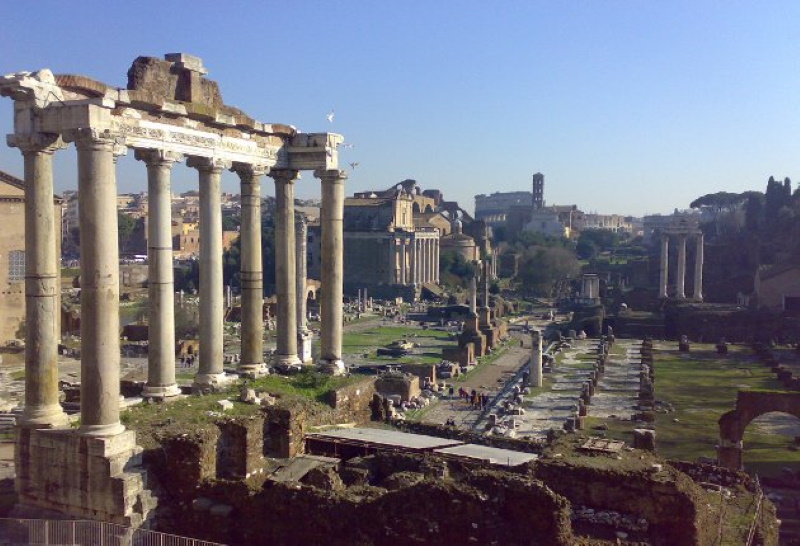
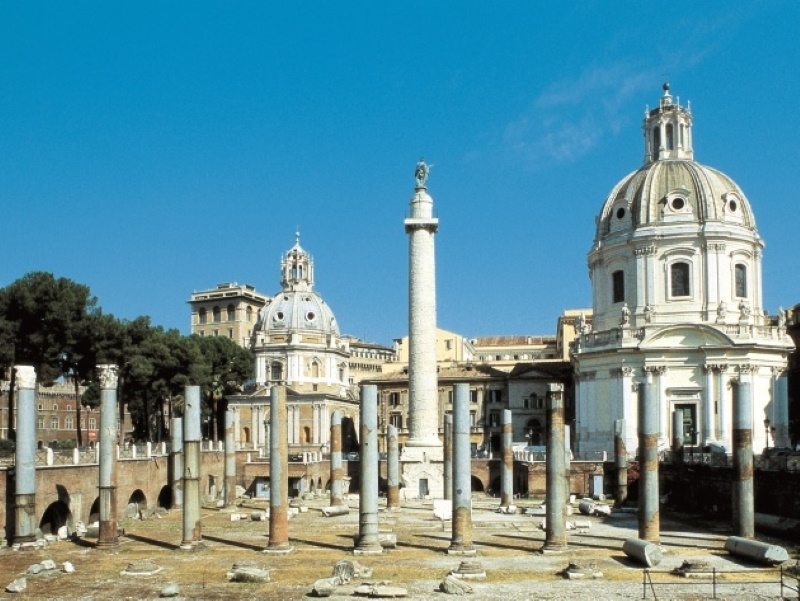
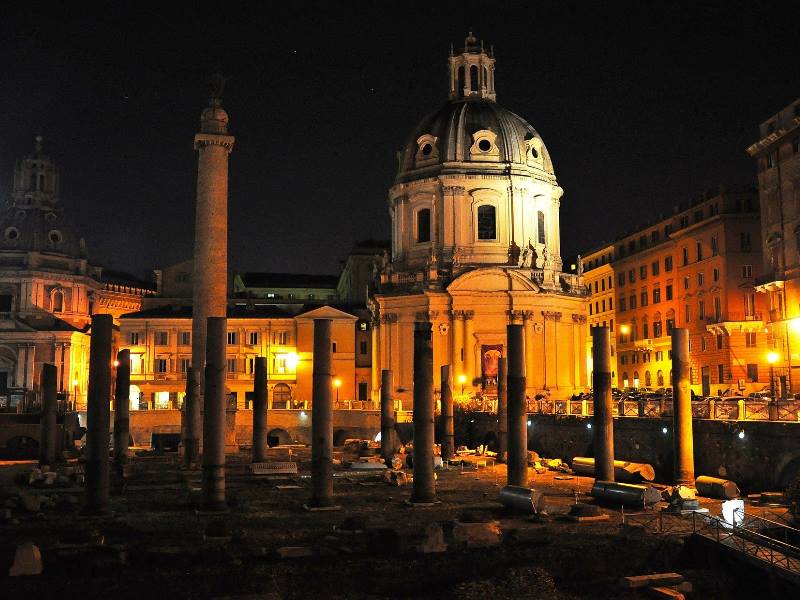
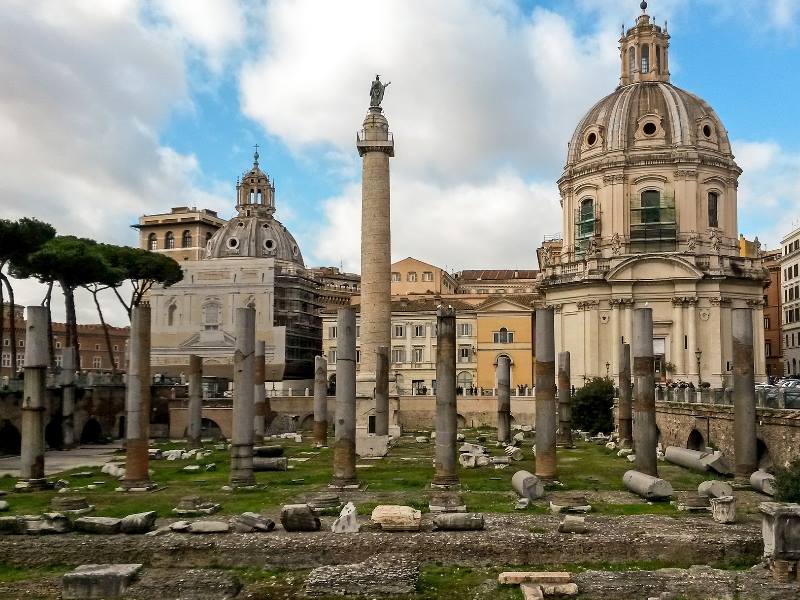
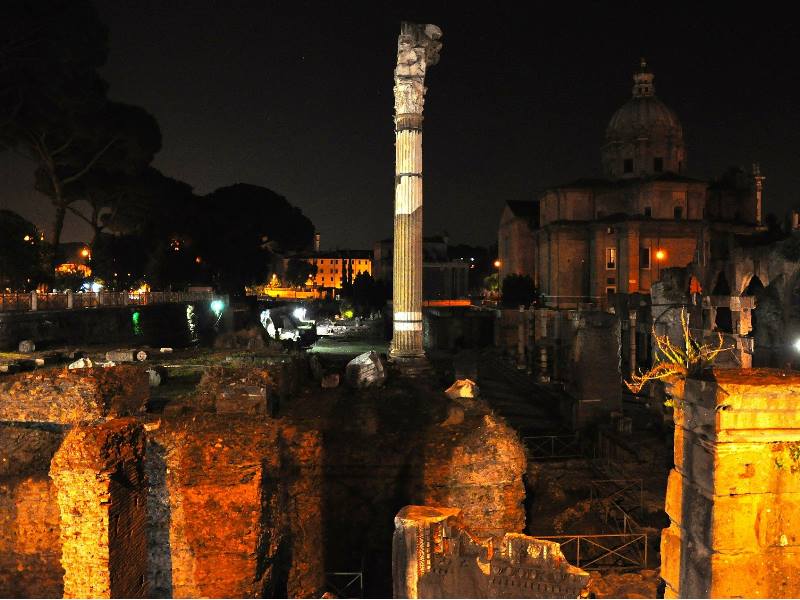
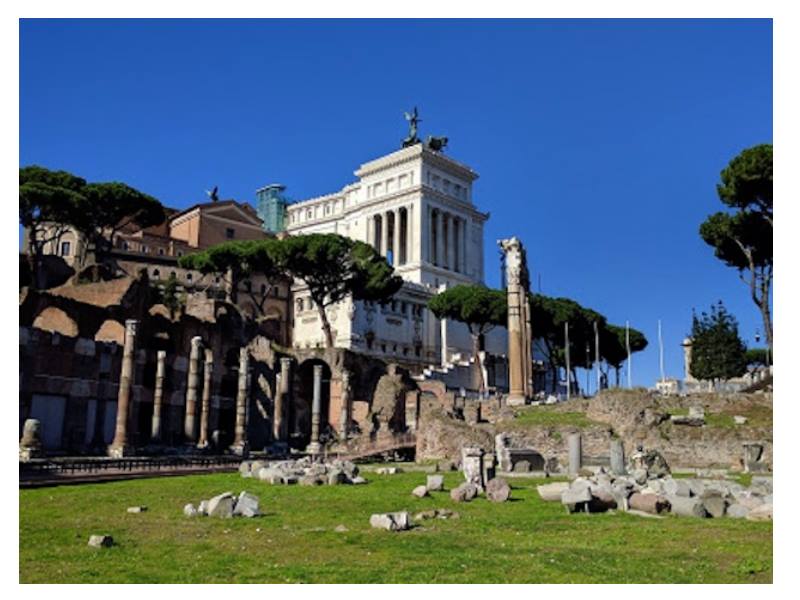
The Imperial Fora are a monumental architectural complex, formed by a series of buildings and monumental squares, the centre of the political activity of ancient Rome, built in a period of about 150 years, between 46 BC and 113 AD.
At the end of the Republican period, when Rome had already developed as the capital of a great empire extending from Gaul to Asia Minor, the ancient Roman Forum was not enough to be the administrative centre of the city. Julius Caesar, in 46 B.C., was the first to realise a new square, at first considered as a simple extension of the republican Forum. Caesar's Forum was followed by the Forum of Augustus, the Transitional Forum or Forum of Nerva (built by Domitian and inaugurated by Nerva) and the Forum of Trajan, certainly the most important one. All these archaeological areas form, from an urban point of view, an organic complex, renamed in modern times the 'Imperial Forums', located between the Capitoline Hill and the Quirinale Hill.
Forum of Augustus (2 BC)
Ottavianus, grandson of Julius Caesar (his mother, Atia, was the daughter of Julia, Caesar's sister) and from 45 BC his adopted son and heir, having avenged his death with the help of Mark Antony at the Battle of Philippi (42 BC) which ended with the killing of Brutus and Cassius, returning in Rome, broke the promise and started the construction of a temple dedicated at Mars Ultor (avenger), who wanted to place the temple in a new Forum, reproducing the architectural model created a few years earlier with the Forum of Caesar. Also, the rapid development of the trials had reduced the space available in the Roman Forum and the Forum of Caesar. Naturally, as for the Forum of Caesar, the construction of the Forum of Augustus was also for the promotion of public opinion; the luxurious decorations celebrated the new golden age that was born with the government of Augustus. On the eastern side of the Northern Arcade there was a large and elaborate room containing the colossal statue of the Genius of Augustus, whose modern name is Aula del Colosso. The ruins of its decoration and the statue are exposed in the Museo dei Fori Imperiali. On the eastern side, the whole area was surrounded by a huge wall, made of peperino, gabina stone and travertine, up to 33 metres high at the highest point. The use of peperino and pietra gabina, considered fire-resistant, was justified by the fact that the wall served to protect the Forum from the Suburra behind it, a popular and overcrowded district where fires were very frequent due to the widespread presence of wooden structures. In the wall are the two entrances to the Forum from the Suburra, one of which is a monumental travertine arch, which since the 16th century has been called Arco dei Pantani.
Forum of Nerva (97 AD)
Before the construction of the Forum, the area was used for commercial activities and the two huge niches of the southern side of the Forum of Augustus. Underground, the Cloaca Maxima, the monumental waste water channel, which tradition dates back to the time of the kings (6th century BC), ran from the Suburra, through the Roman Forum and the Velabro and into the Tiber, just down the Tiber Island. Although it is named after Nerva, the Forum was built by Emperor Domitian (81-96 AD), who was murdered in 96 and was not able to celebrate its opening. Nerva took advantage of this in 97, and the Forum still carries his name. The forum square was 114 metres long and only 45 metres wide. On the longer flanks a simple columnade was built, as the space available was so small that normal arcades could not be built, as in the other Forums. Only two columns of the ancient columnade remain standing today, and in modern times they are called Colonnacce because for their state of ruin. Within the Forum you can see a section of the street with deep grooves, which formed the external part of the coverage in Tufo blocks from the Cloaca Maxima, where the ancient floor of the Forum was supported. In the Middle Ages the blocks of Tufo were removed and the wheels of the carriage that travelled along them cut into the blocks of Tufo, creating the grooves that can still be seen today.
Forum of Trajan (112 AD)
Between 95 and 105 AD, the excavation of the Quirinale hillsides was started in order to create space for new buildings. A total of about 300,000 cubic metres of tufaceous material was removed, thus obtaining a building area of about 4.2 hectares. In this area the last and most grandiose of the Imperial Fora was built: the Forum of Trajan. Its construction probably comes from the construction of new spaces for the administration of justice, whose activities had moved from the Roman Forum to the Forum of Caesar and the Forum of Augustus. The Forum of Trajan was also built to celebrate the emperor's victory over the Dacians, who had been defeated in two very hard military campaigns. The extraordinary spoils of war greatly enriched the Empire and were used to build the Forum, which was inaugurated in 112 AD. The Forum of Trajan is one of the many masterpieces of Roman engineering, and its rooms were probably used for administrative and judicial activities in the Imperial Forums. The Forum developed in a large rectangular square of 110×85 metres, flanked by colonnaded porticoes on the two long sides, and closed to the south by a colonnade of coloured marble and to the north by the elevation of the Basilica Ulpia, which, inaugurated in 112 AD, took its name from Trajan's family, the Gens Ulpia, and served as an immense tribunal, with its two floors and five naves. In the centre of the square the Trajan Column was erected to celebrate the splendour of the emperor. Today, the high section of the building complex houses the Museo dei Fori Imperiali, which presents the architecture and sculptural decoration of the Fora.
During the course of Ancient times, the Imperial Fora, including enlargements, fires, restorations and reconstructions, maintained their architectural conformation and function intact. It was only in the 4th century that the progressive transformation of the area started, leading to the birth of a new urban landscape, so that its monuments fell into ruin, or were reused for new constructions. These include the Arch of Titus and the Arch of Septimius Severus, which have survived in good condition as they were incorporated into medieval fortifications.The area was also used as cultivated land and as pastureland; since then it has been known as Campo Vaccino. But the final destruction of the Imperial Fora was made during the Renaissance. Pope Julius II (1503-1513) used the area as a quarry for materials to be reused, often after having them crushed to make lime, in the project of building and artistic renewal of the city that he himself had started. The protests of leading artists such as Raphael and Michelangelo were of little use.
The Forum was re-discovered from the 16th century by the painters of Roman views who at that time loved to paint the ruins outcropping in the pasture area: a singular and much appreciated subject. During the following centuries there were several excavation campaigns, with greater energy from the 19th century onwards, but the area was completely excavated in the early 20th century and the ancient architecture was almost completely obliterated to make way for the creation of Via dei Fori Imperiali along which, since 1950, the annual 2 June parade on the occasion of Italian Republic Day takes place.
Since 21 April 2015, the Fori Imperiali have been enjoying new lighting, designed and created by Oscar winner Vittorio Storaro and architect Francesca Storaro. Today, the archaeological area of the Imperial Fora can be visited, with the entrance in Piazza Santa Maria di Loreto, near the Trajan Column. The route of the visit, following the footbridge on the site, touches on a part of the Forum of Trajan, passes under Via dei Fori Imperiali through the cellars of the ancient dwellings of the Quartiere Alessandrino, crosses the Forum of Caesar and ends near the Forum of Nerva, from where you exit onto Via dei Fori Imperiali.
A walk from Termini Station to the Imperial Forums, through the Rione Monti
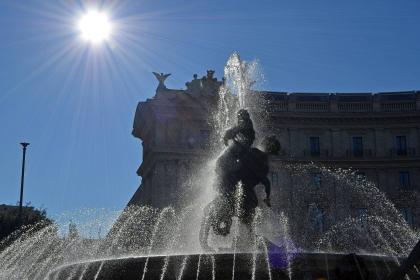
 Condividi
Condividi
The Trajan's Markets - The Museum of the Imperial Fora
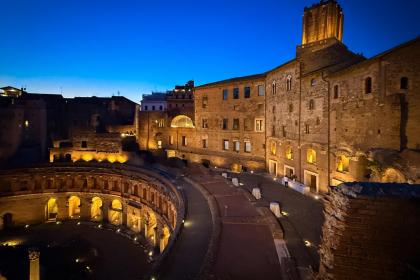
 Condividi
Condividi
The Trajan’s Column
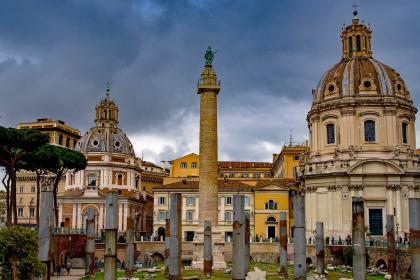
 Condividi
Condividi
The Roman Forum and the Palatine
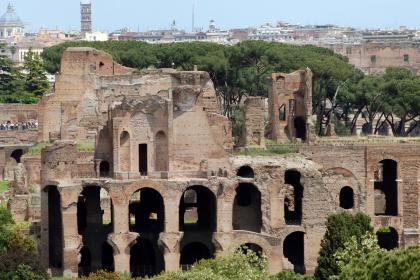
 Condividi
Condividi
Information
Due to the Liberation Day celebrations, we inform visitors that on Thursday, April 25th, 2025, the Markets of Trajan – Museum of the Imperial Forums and the Imperial Forums archaeological area will be closed to the public until further notice.
From Monday to Sunday09.00 – 17.30: from 1st to 30th March09.00 – 19.15: from 31 March to 30 September09.00 – 18.30: from 1st to 26th October09.00 – 16.30: from 27 October to 28 FebruaryLast entry one hour before closing24 e 31 December from 09.00 to 14.001 January 2025 from 08.30 to 16.30 Last entry one hour before closing
 Condividi
Condividi
Location
To find out about all accessibility services, visit the Rome accessible section.












































